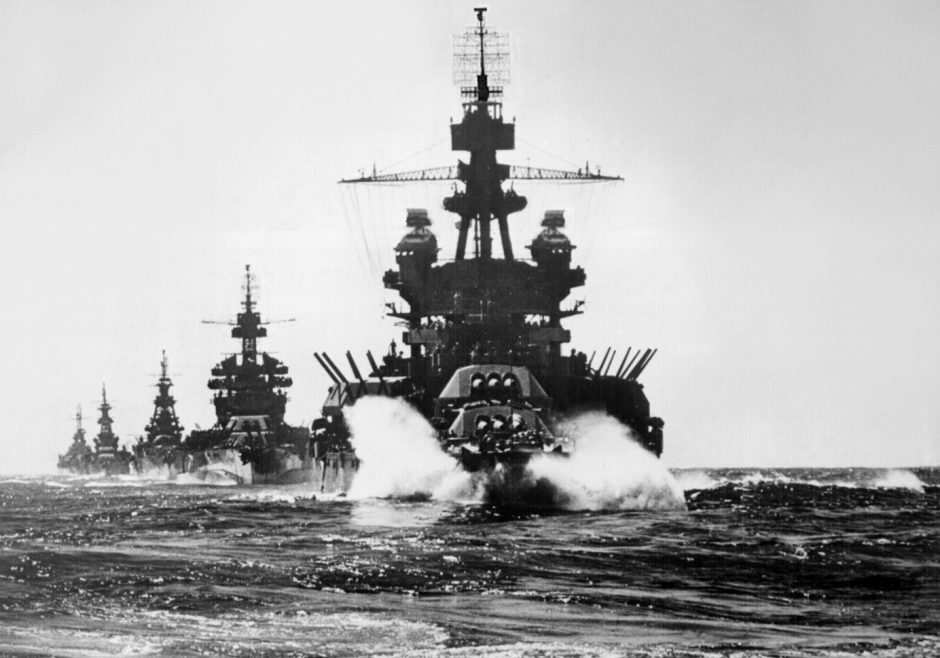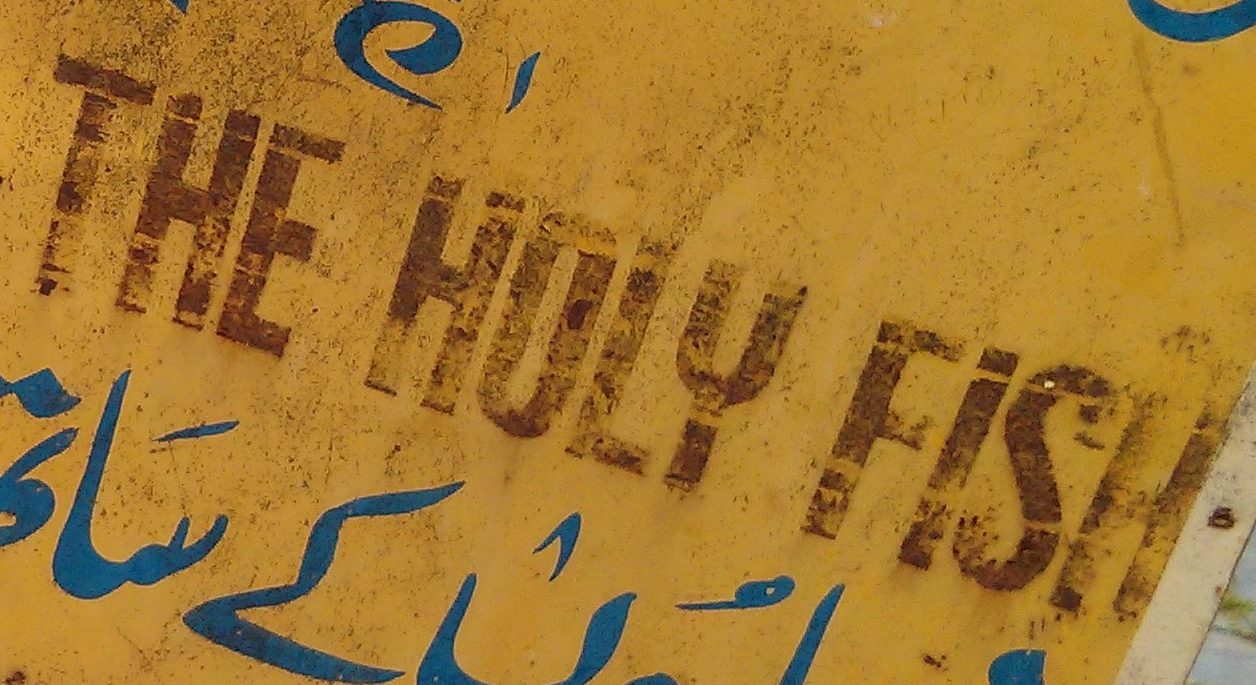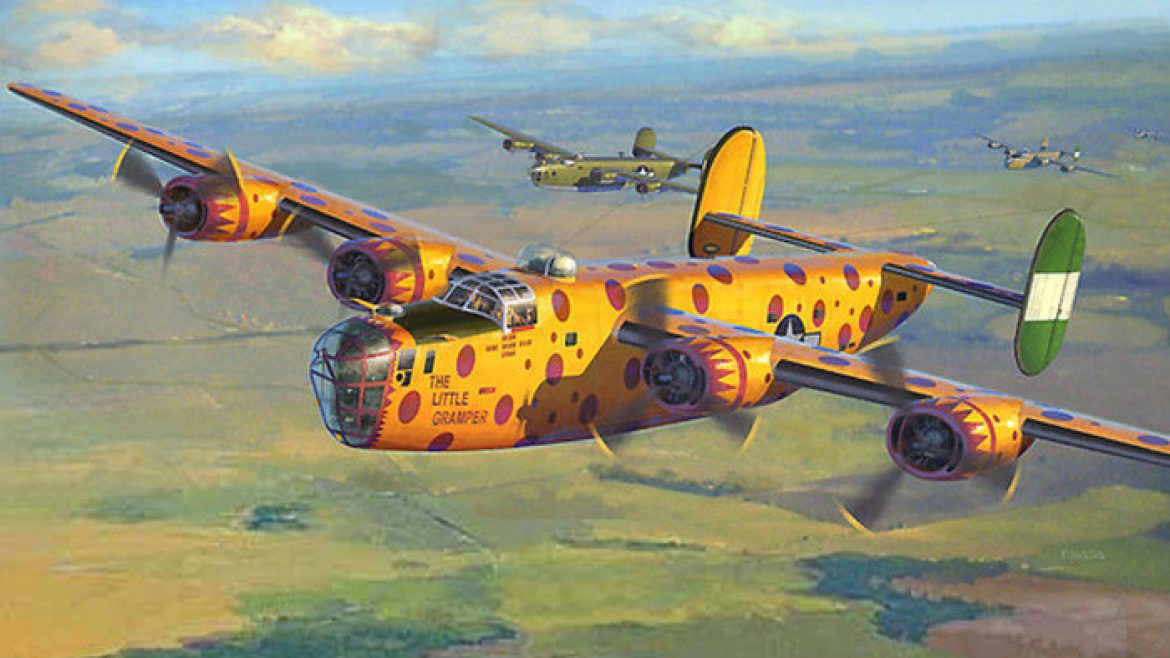War may be a grim affair, but it’s not one which lacks stimuli for the senses. From graphic artists in England to dye makers in Japan, in the Second World War the use of colour in inventive (and at times quirky) ways was key to a surprisingly diverse range of activities. Let’s rewind to World War Two for a pictorial tour of three striking applications of shape and colour (and a fourth that’s more about invisibility but was too good to leave out).
Dazzle Camouflage
When we think of camouflage, we might imagine a soldier’s uniform, patterned to help them hide in the forest, jungle, or snow. The point of camouflage is typically to avoid detection, whether it’s a warship painted grey, a bunker made to look like rocks, or an observation post disguised as a tree.


Now, take this concept of being hard to see, imagine the complete opposite, and you have dazzle camouflage.

Applied chiefly to warships, dazzle camouflage is based on the idea that in the era of binoculars and aircraft there is little point trying to hide a warship at sea. Even if the ship’s camouflage scheme was perfectly suited to both the viewing angle and prevailing weather conditions, a ship’s location can be given away by its exhaust and its wake (which is the slowly dissipating white-coloured waves created by its movement).

Instead of concealment, proponents of dazzle held that camouflage should seek to confuse the enemy. The colours and lines were designed to challenge the eye, to make it more difficult to accurately estimate the ship’s range, speed, and direction. The enemy then will either misjudge its shot or have positioned itself poorly for making an attack.

While a ship painted in dazzle camouflage can be difficult to comprehend at the best of times, the effect was believed to be magnified under poor viewing conditions, such as through the periscope of a German submarine hunting in a stormy, grey Atlantic.

Dazzle camouflage debuted a generation earlier in World War I but was still in use to a lesser degree in World War II. It was adopted, to varying degrees, by the Royal Navy, United States Navy, and the German Kriegsmarine.

Although applied mainly to ships, dazzle camouflage was also trialled on aircraft.

It has been debated whether dazzle camouflage was effective in either World War. One advocate was a German U-boat captain, who had this to say about attempting to sink the RMT Olympic (sister ship of the Titanic): ‘it was not until she was within half a mile that I could make out she was one ship [not several] steering a course at right angles, crossing from starboard to port. The dark painted stripes on her after part made her stern appear her bow, and a broad cut of green paint amidships looks like a patch of water. The weather was bright and visibility good; this was the best camouflage I have ever seen.’

Closely related to dazzle camouflage on vehicles were deceptive camouflage schemes. These also sought to confuse the enemy’s interpretation of the camouflaged vessel.

Standard camouflage uses lines and shading to break up the shape of familiar objects. This makes them less likely to catch the eye, instead blending into the background. In a dazzle paint scheme, sometimes the mishmash of colour and shape would seek to obfuscate key features of the vessel, making quick and accurate identification more difficult.

In this era, warships typically carried books with the silhouettes and characteristics of every warship in the world, and even of every merchant ship. An enemy could be lured into making tactical mistakes if you could trick them into misidentifying your vessel.

The World Wars saw entire populations mobilised to provide the manpower and industry required to fight on an epic scale. This included artists and graphic designers, who swapped their usual canvasses to develop the dazzle patterns.

More broadly, wartime camoufleurs were drawn from a variety of pre-war jobs: cartoonists, architects, magicians, stage designers, and zoologists. One early contributor to disruptive ship camouflage was an expert in the development of South American lungfish embryos.

Most available photographs are in black and white, and though the jagged lines and crazy patterns are striking, they don’t do full justice to the riot of colour that would be seen in reality. One can only imagine the reaction the designs received when first proposed to senior Navy officers.

Yehudi Lights
Can spotlights make an aeroplane nearly invisible? This is a question that American researchers asked and answered in World War 2.
The U.S. Navy was battling enemy submarines in both the Atlantic and Pacific. Unlike today, technical limitations forced submarines of that era to spend much of their time surfaced rather than safely underwater. This made patrol aircraft equipped with depth charges an effective countermeasure.

As a defence, surfaced submarines would post multiple sailors above-deck to scour the skies with binoculars for any sign of an aircraft. If they spotted a plane with enough notice then they could escape underwater.
So for the pilots, the goal was to get as close as possible to the submarine before being seen. For that, the aircraft needed to blend in. But even if painted in the brightest white available, planes still appeared dark against the sky.

Building on Canadian work in hiding convoys from German submarines, American researchers came up with a possible solution: place forward-facing spotlights along the front of the plane and adjust their intensity to match the brightness of the sky behind.
Eventually experimentation showed the right number and types of lights. Because a plane can only produce so much electricity, the spotlights were designed to focus all their light into a narrow beam. This meant the camouflage would only work if the plane was flying directly at the observer. Placed at one-metre intervals, the beams would appear as a single light-coloured object until the plane got within a few kilometres, by which point it was too late for the submarine to escape.
As an experiment, researchers built a replica bomber out of wood then hoisted it 25 metres into the air. There it hung suspended by wires strung between two poles.

Observers watched from across the water, a mile away. When the lights were turned on, the poles could be seen, even the wires, but it was as if the plane itself had disappeared.
Ultimately this development came too late in the war to be implemented, as improved radar and searchlights encouraged Allied aircraft to hunt submarines at night-time.
Shell Colours
You’ve probably seen movies where grand sailing ships of yesteryear pummelled each other with cannon fire. While fighting in the Age of Sail was done at close range, by World War 2 opposing ships were usually kilometres apart. The great battleships of this era wielded power that’s difficult to comprehend, lobbing shells as heavy as a car at targets over 40 kilometres away. And by car I mean cars, as typically nine could be fired simultaneously. P.S. the cars are explosive.

Now imagine the challenge faced by gunners in actually hitting the target. You’re firing at a distant target that is perhaps half-hidden by smoke or squalls. And that target is moving. You’re moving too, maybe at 50km/hr. And you’re rolling up and down, side to side, over waves. While possibly being shot at yourself. Also, your shot might take tens of seconds to reach the target. And though heavy, the shell is airborne for so long that it will be affected by whatever the wind is doing hundreds of metres above the sea.

It’s amazing that they hit anything. But hit they did. One technique to help aiming was called ‘bracketing’. The gist was that by deliberately landing some shots on this side of the target, and others on the far side, a keen-eyed observer could note the splashes and iteratively calculate adjustments until eventually the shots fell onto the enemy ship.

Challenging enough in itself, it became even harder when multiple ships are shooting multiple guns at an assortment of targets. Which splash belonged to which gun on which ship?

The solution? Add colour.
French, British, American, and Japanese warships began putting bags of coloured dye into their large shells. Each ship was allocated a unique colour. The dyes were bright enough, in daylight at least, to give a distinct hue to the splash created by each ship’s firing.

While I haven’t been able to find any coloured photographs of the shells in action, one can imagine that coloured geysers erupting around your ship would’ve made for an impressive sight. If only it wasn’t accompanied by the risk of imminent destruction.
The shades used included red, yellow, orange, green, blue, and black. There are reports of decks tinted by near misses, stinging eyes from dye-infused seawater, and of colourfully stained sailor uniforms.
Assembly Ships
An assembly ship isn’t actually a ship. Rather, it is an aircraft – and a particularly colourful one at that.
For most of World War 2, strategic bombers (particularly those used by the Allies) relied on manned machine gun turrets for defence. These big, lumbering planes bristled with defensive armament: up to 13 machine guns in nine distinct positions around the plane.

By flying in a tight formation, each bomber’s machine guns also protected its neighbours. But a tight formation heightened the risk of bombers colliding, especially given the turbulence caused by so many planes in close proximity.

Formations were complex and changed across the course of the war as new ideas were tested and refined. They had to consider the number and types of bomber flown, the opposition’s anticipated strength, type, and tactics, and how to avoid dropping bombs on friendly aircraft.

This is complicated enough with a flight of bombers, yet consider that these formations were themselves often just tiny parts needing to be combined into a larger grouping. The scale that the attacks grew to was truly monumental. At their peak, the Allies were launching ‘thousand bomber raids’ into Germany.

So, you need to construct a single complex formation of hundreds of bombers, which are taking-off one at a time from multiple airfields all across southern England. You must do so quickly, otherwise the bombers won’t have enough fuel for their mission. And to avoid tipping off the enemy, you can’t use radios. How do you even approach such a task?
Enter the Assembly Ship.

Assembly ships were bombers painted in striking colours and patterns. They were used by the US 8th air force, operating in Europe, to help assemble bombers into the correct formation.


Candidates for becoming an assembly ship were chosen from the pool of bombers that had become worn-out and no longer fit for combat. They swapped their weapons and armour for extra navigational equipment and numerous coloured flares.


Assembly ships were amongst the first planes to take-off at the start of a raid into enemy territory. They’d fly around their designated area, firing coloured flares and flashing lights to guide their group’s aircraft into the correct formation.

Once formed up at the rendezvous point, each assembly ship would escort their group to its proper place in the larger formation. Their distinctive patterns helped pilots identify the correct assembly ship to follow.

When the raid was ready to depart, the assembly ships returned to their base. Because they didn’t participate in the bombing raid, their bright colours were not a risk.

Assembly ships were also called ‘Judas goats’. A Judas goat is trained to help goatherds coordinate their flocks by leading other goats onto trucks or to specific pens.

For the assembly ships it was a particularly apt nickname, as the duty of a Judas goat can include leading their fellow goats to the slaughterhouse, while they themselves are spared.
Did you like this article?
Do you like this site?


Loving the randomness of your topics